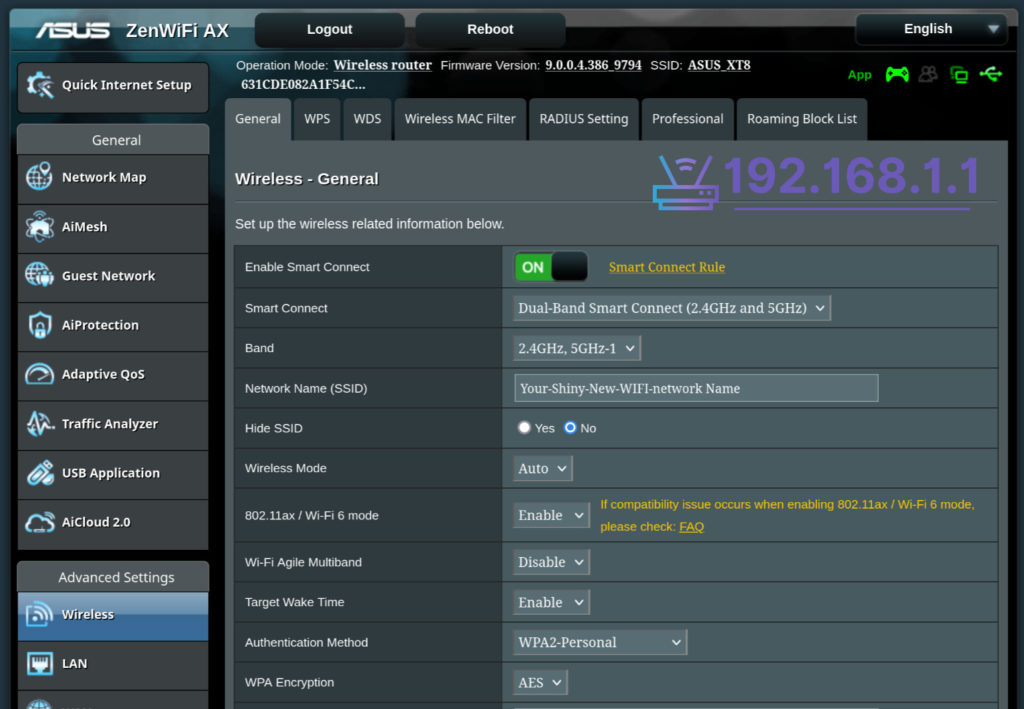What is the IP 192.168.50.1
192.168.50.1, like other similar strings of numbers, can be the private IP (Internet Protocol) address of the wireless router at home or the office. To check if your router’s private (also knowns as gateway) IP is indeed 192.168.50.1, just check the label at the back of the device. And in case you suspect you, or someone else has already changed your network private IP, you can use your Windows Command Prompt to check if 192.168.50.1 is still your gateway IP.
Why Do You Need a Private IP
There is a finite number of public IP addresses that devices may use to communicate with each other across the Internet. The private IP address provides you with an opportunity to connect an enormous amount of internet-capable devices to the World Wide Web, without taking up too many of the precious public IPs. The private IP is the backbone of your home or office network, but because you don’t use the private IP to communicate with devices from outside of your network, it isn’t a problem for many routers across the world to share the same gateway IP. That is why manufacturers assign 192.168.50.1 and other similar addresses to all devices they produce. While you can choose to change the default private IP of your device from 192.168.50.1 to something else, to increase your network’s security, there are a few limitations. The most obvious one is that the new default IP should follow the same pattern of four numbers between 0 and 255 as 192.168.50.1 does.
Reserved IP Addresses
Another limitation is that there exists a set of IP addresses that can’t be used by the public. These are called Reserved IP addresses. 127.0.0.0 to 127.255.255.255 is one such range that is reserved for technical maintenance of devices, and other specific tasks. If you wish to change your router’s default private IP from 192.168.50.1 to something else, and accidentally choose an IP from a reserved range, your device will not function properly. To fix that, you will need to choose a new address, or roll back to 192.168.50.1.
Access Your Router at 192.168.50.1
Gaining access to your router’s settings happens through its current gateway IP. From there, you will have the opportunity to personalize and optimize your network in a way that makes it faster, better, and more secure. To start, open Chrome or Edge (or any other internet browser you prefer) on an internet-capable device of your choice. Type your gateway IP – 192.168.50.1 in this case – into the search bar and hit Enter.
On this step, you will either find yourself on the home page of your router’s admin panel or at a loading screen prompting you to enter a username and password. The default username and password for your router can be found on the back of the device, on the same label listing 192.168.50.1 as the gateway IP.
If these don’t work, you have several options:
- Contact the person you bought the router from if you’ve gotten it secondhand
- Contact the Internet Service Provider you set up the wireless network for you.
- Factory reset the router.
While the last option will surely roll back the device’s private IP to 192.168.50.1, it will also wipe out all changes made to the network since you’ve set it up. Use the factory reset option only as a last resort.
Look around the menu in the admin panel and find the several sub-menus that would interest you at first.
Wi-Fi Settings
Here you will have the chance to set up a password that anyone who wishes to use your wireless internet will have to use. Choose a strong password that is hard to guess, so that you have full control over who and when uses your Wi-Fi. In the same place, you can name your network. There are no restrictions on the names you can choose, so why don’t you just let your imagination run wild?

Network Settings
In this menu, you can change the logins necessary to access the router’s admin panel – or set up such, if typing 192.168.50.1 directly logs you in. This is also the place where you can update the default private IP for the router from 192.168.50.1 to anything else outside the reserved IP ranges. The main reason to do that is to improve your network’s security. The default private IP and logins make your wireless vulnerable because anyone can find them out and use them.
Once you set up those things, feel free to look around and tweak anything else that you think might make your network run smoother.
